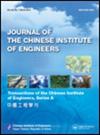Studies on the elbow corrosion associated with the wall-wetting process in stratified and wave flows
IF 1.2
4区 工程技术
Q3 ENGINEERING, MULTIDISCIPLINARY
Journal of the Chinese Institute of Engineers
Pub Date : 2023-01-10
DOI:10.1080/02533839.2022.2161942
引用次数: 0
Abstract
ABSTRACT The flow-induced corrosion in gas-liquid flow usually occurs in the petrochemical and transportation industries, which has become a hot topic, especially for the elbow system. In this paper, a series of simulations using the VOF method and SST k-ω turbulence models were carried out to investigate the temporal and spatial distributions of the water wetting process in the elbow system. Combined with experiments, the relationship between the dynamic hydrophilic process and the corrosion mechanism was revealed. The results show that there is a stratified flow in the pipe at low speed. Wetness is always present in the inner wall of the elbow, and the corrosion rate reduces as the axial angle increases. As the velocity increases, the flow pattern changes to wave flow. Part of the water in the inner wall is entrained into the gas phase and thrown out onto the outer wall to form the water wetting. The location of maximum wall shear stress is transferred to outer wall, causing an increment of corrosion rate. The corrosion rate of the outer wall increases with the axial angle.层状流和波浪流中与壁湿润过程相关的弯头腐蚀研究
气液流动中的流致腐蚀问题在石油化工、交通运输等行业中经常发生,已成为人们关注的热点问题,尤其是弯头系统。本文采用VOF方法和SST k-ω湍流模型进行了一系列模拟,研究了弯头系统中水润湿过程的时空分布。结合实验,揭示了动态亲水过程与腐蚀机理之间的关系。结果表明:低速时管内存在分层流动;湿性始终存在于弯头内壁,腐蚀速率随着轴向角的增大而减小。随着流速的增加,流型转变为波浪流。内部壁上的部分水被带入气相,并被抛出到外部壁上形成水润湿。墙体最大剪应力位置向外壁转移,导致腐蚀速率增加。外壁腐蚀速率随轴向角增大而增大。
本文章由计算机程序翻译,如有差异,请以英文原文为准。
求助全文
约1分钟内获得全文
求助全文
来源期刊
CiteScore
2.30
自引率
9.10%
发文量
57
审稿时长
6.8 months
期刊介绍:
Encompassing a wide range of engineering disciplines and industrial applications, JCIE includes the following topics:
1.Chemical engineering
2.Civil engineering
3.Computer engineering
4.Electrical engineering
5.Electronics
6.Mechanical engineering
and fields related to the above.

 求助内容:
求助内容: 应助结果提醒方式:
应助结果提醒方式:


